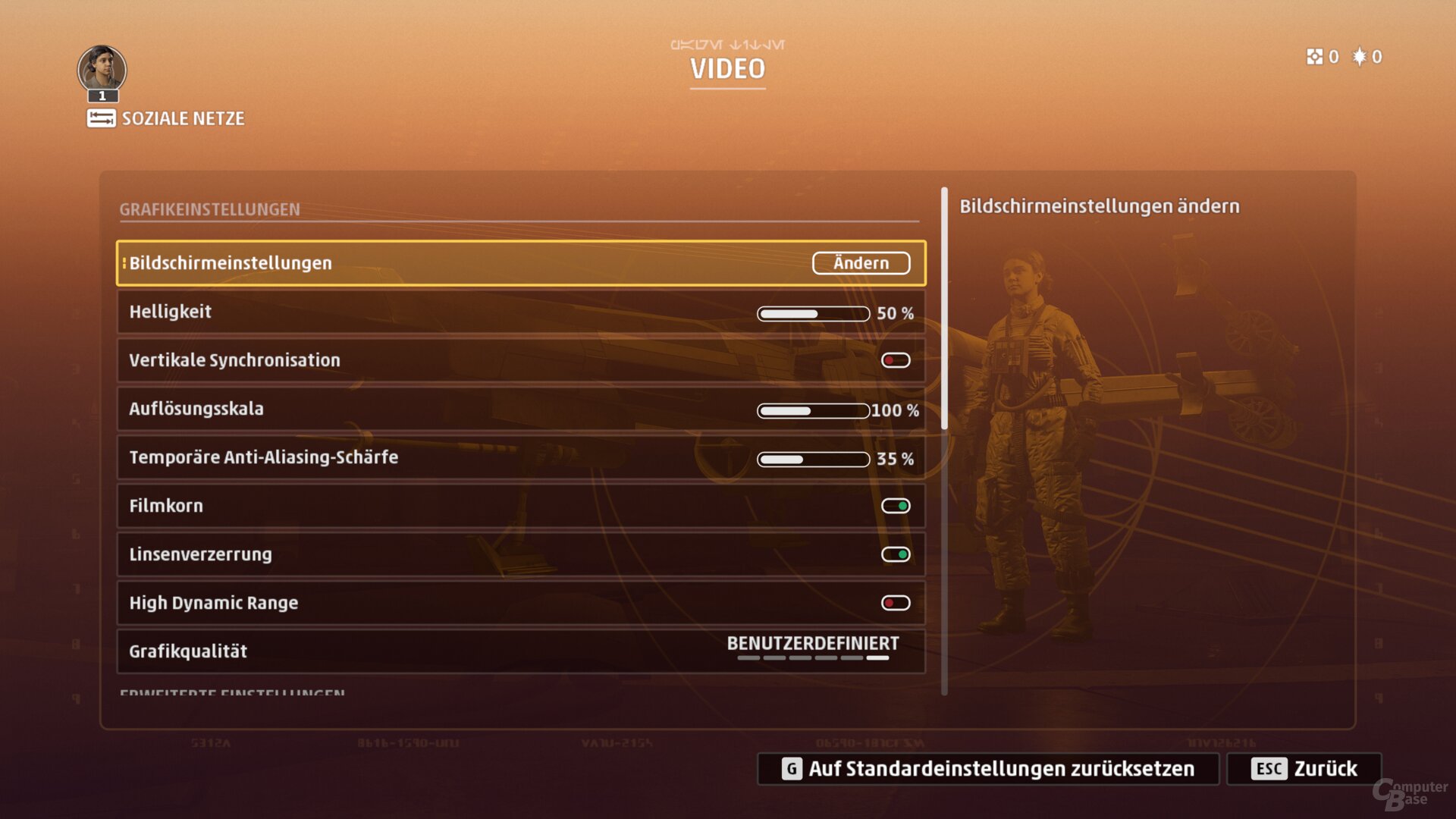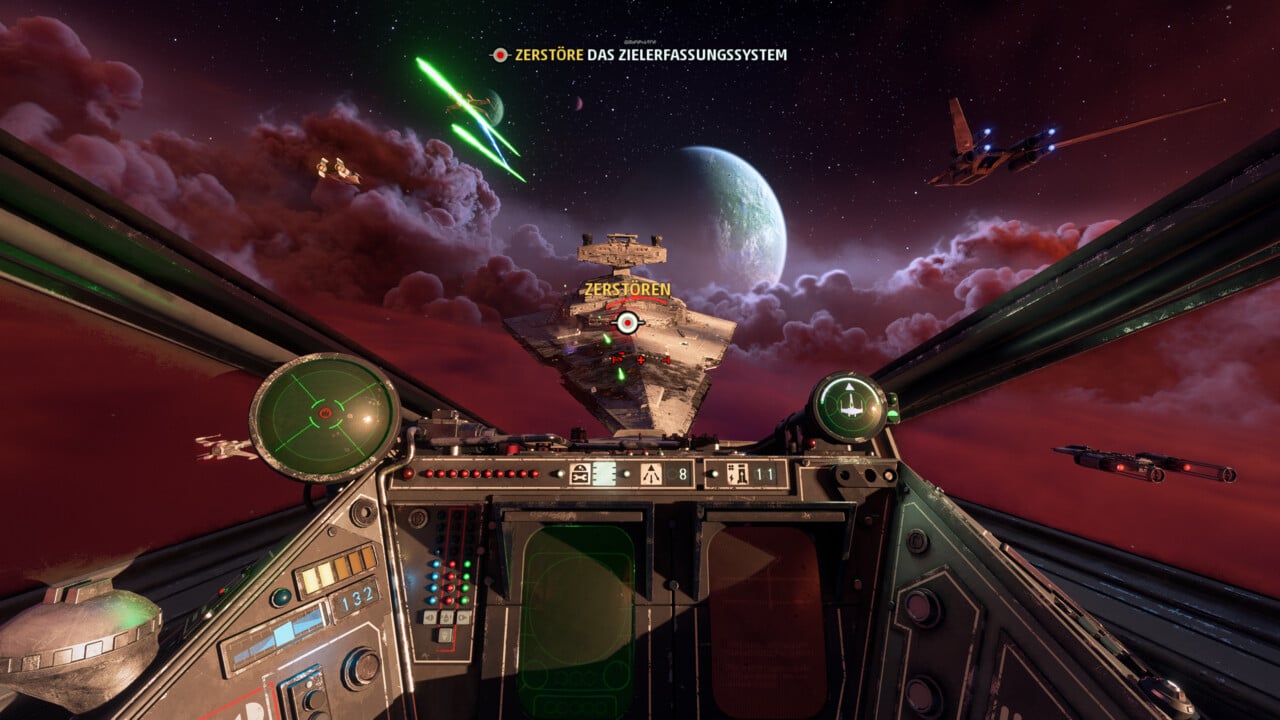Star Wars: Squadrons im Technik-Test : Star Wars: Squadrons sends the player into space for the battle between the New Republic and the Empire. The technology of the PC version shows a very good performance, 60 FPS are also possible in Ultra HD with a middle class graphics card.
Not quite a year after Star Wars Jedi: Fallen Order, EA is sending Star Wars: Squadrons, the next game in the popular cinema universe, into the running. And for the first time in sheer eternity, it goes back into space in the style of a Star Wars: TIE Fighter and a Star Wars: X-Wing Alliance. In the technology test, Star Wars: Squadrons in the PC version showed its really good side – until the game suddenly refused to start.
Suddenly there was no activation problem on 2 Windows installations
This means that the elephant is so centered in the room that this has to be clarified first. Star Wars: Squadrons worked without any problems with nine graphics cards. When the tenth was installed, the game suddenly refused to start. The two loading bars from the EA launcher Origin appeared normal and also ran through. The last one then allows a few seconds before the window disappears. Normally the game should start then, but instead only Origin itself was brought into focus.
And then that was it. Commentless and reproducible. Also with other graphics cards. Even on a separate Windows installation, the game initially refused to start. Origin’s activation limit was not the cause. In EA’s own forum there are a few entries that speak of a similar behavior, but all too often the problem is not encountered. At the umpteenth desperate attempt a day later, the title suddenly started on the second Windows installation after all, so that the editorial team was able to add a few more graphics cards to the test. On the other hand, the game still refuses to start on the first Windows installation.
Apart from that, the technology doesn’t seem to be fully developed yet. There are reports on the Internet that the title has problems with monitors at more than 60 Hz. So the feel of the game should often turn out to be significantly worse than it should actually be. Problems can also arise if HDR is activated even though no HDR monitor is used. It is unclear why the option can be activated at all. HDR was also active by default in the editorial office without a corresponding display being used.
The graphics are chic but unspectacular
Not surprisingly, Star Wars: Squadrons uses the in-house graphics engine Frostbite, which is also used in the Battlefield series, among other things. The game looks chic with all the particle effects, explosions, large space cruisers and colorful space scenarios, but you don’t experience a real wow effect. But there is nothing to criticize for that. The graphics do not flicker and there are no other optical dropouts to report.
The low-level API DirectX 12, which has meanwhile been integrated into the engine, is left out, more than DirectX 11 is currently not supported. The same applies to graphics effects developed by AMD or Nvidia: Raytracing and Co. are not an issue in Star Wars: Squadrons.
The graphics menu of Star Wars: Squadrons offers four different graphics presets with “Low”, “Medium”, “High” and “Ultra” and accordingly there are also a sufficient number of manual options to adapt the look to your own PC. In addition, there is a setting for in-game up- or down-sampling. That was it, further convenience such as an FPS limiter or sample screenshots for the individual options are missing.
- The Star Wars: Squadrons graphics menu
picture 1 Of 3

The operation of the graphics menu is annoying to unusual. For example, the resolution setting is, for whatever reason, hidden under the separate sub-item “Screen settings”, while all other and far less important options are immediately visible. The only advantage of this is that many players may not even notice that the function is obviously a bit flawed. Because sometimes changes in resolution want to be confirmed with the space bar, sometimes not. And sometimes the changed resolution is not even adopted. Then it helps to change to any other resolution and then to step back to the desired resolution. The fact that the game occasionally minimizes itself when changing the resolution doesn’t make it any better either.
It is also noticeable that the font in all menus is never really sharp, regardless of the resolution. It almost looks as if this is being rendered in Full HD, for example, while the screen is actually running in Ultra HD. Fortunately, the actual game graphics do not show the behavior.
The test system and the benchmark scene
All of the following benchmarks were carried out on an AMD Ryzen 9 3900XT (test), which is operated with the standard settings. The Asus ROG Strix B550-E Gaming (BIOS 0802) with the B550 chipset was installed as the mainboard, graphics cards can be controlled accordingly with PCIe 4.0. The CPU was cooled by a Noctua NH-D15S with a centrally installed 140 mm fan. 32 GB of memory (4 × 8 GB, single rank, DDR4-3600, 16-16-16-38, optimized secondary timings) were available to the processor. A freshly installed Windows 10 2004 with all updates was installed on an NVMe M.2 SSD with PCIe 4.0, the same applied to AMD’s current chipset driver.
The drivers used were the Adrenalin 20.9.2 and the GeForce 456.55, both of which are officially optimized for Star Wars: Squadrons.
Test sequence and settings
The 25-second test scene takes place in the game mode “Fleet battles against the AI” on the “Galitan” map on the pages of the new republic and without other players. The test sequence begins shortly after the start of the round and shows the approach to the actual combat area. Since several AI pilots, both of their own and enemy, are in view, who are also shooting at each other, the scene is very dynamic. However, the benchmark results can still be reproduced with an inaccuracy of around 1 percent. The benchmark is one of the most demanding scenes in Star Wars: Squadrons.
The ultra preset is used for the resolutions Full HD, WQHD and Ultra HD and the surrounding obscuration is also set to the highest level “Ultra”.
On the next page: GPU benchmarks, frame times, game review and conclusion















